The 2030 is a short-travel MTB that was designed to pedal well, but SCOR prefers to look at it as a trimmed-down enduro bike rather than a beefed-up cross-country or ‘downcountry’ bike. Looking at the geometry and build specs, it’s clear this isn’t an XC race machine, but rather a fun and versatile trail bike that’s intended to be ridden to its limits.
I got a chance to ride the new SCOR 2030 at Crankworx Whistler, so I’ve included my ‘first ride’ impressions of the bike below. I’m also lined up to get my hands on one for a few weeks this fall, so keep an eye on Bikerumor for a full review.
SCOR 2030 – Frame Details:
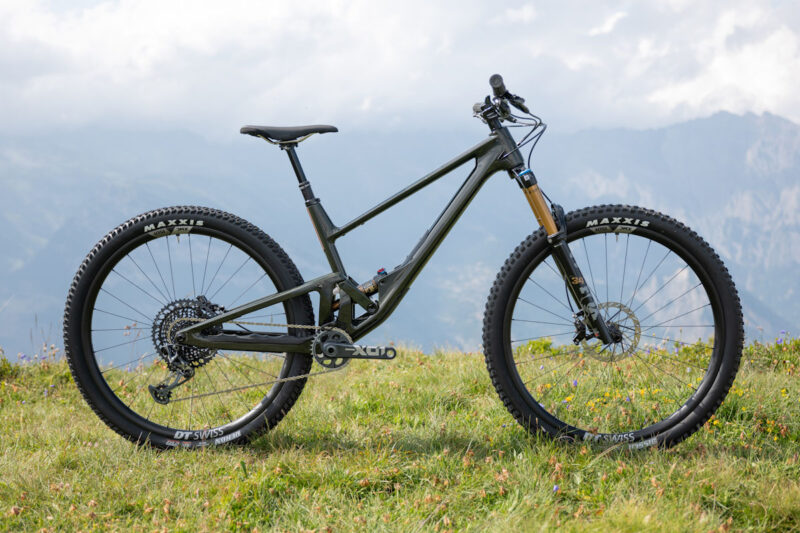
SCOR’s new 2030s are available with a carbon frame only. They roll on 29” wheels, offer 120mm of rear travel, and all models are equipped with a 140mm fork. We’ll dive deeper into geometry below, but the frames were designed with long front ends to capably handle steep descents, and short rear ends to keep the bikes agile and playful.
Despite its shorter travel, the 2030 frame was built to be just as strong as SCOR’s 4060 enduro bike. SCOR says low weight was not the first priority in designing the 2030s (although the one I rode at Crankworx felt very reasonable to me). The frame was designed to be stiff against pedaling forces, while offering some lateral compliance to help it squirm through rough terrain. To ensure the 2030 can handle any terrain, all of the frame pivots feature strong steel axles and weather sealing to protect the bearings.
Suspension Design

SCOR’s lower link-driven instant center suspension platform is designed to be efficient for solid pedaling, active for good traction and ride comfort, and progressive enough to handle rough terrain. SCOR followed the same principles as they did with their longer travel bikes, but the 2030’s suspension is tuned to provide their desired ride characteristics within its 120 mm of travel: The main takeaway here is that the 2030 offers a more progressive tune than most 120mm bikes.
It is possible to extend the 2030’s rear travel to 130mm (with a 52.5mm stroke shock) but SCOR feels 120mm is truly the sweet spot for this bike. If you do run a longer shock, it does not change the frame geometry, but you’ll wind up with a bit more sag versus the stock rear shock.
If you want to put a 27.5” rear wheel in the 2030, you can, but the frame does not have a flip chip to correct for MX geometry. Running a mixed wheel setup will lower the bottom bracket and affect several other angles and measurements… SCOR has not provided MX geometry figures.
Stash Hatch
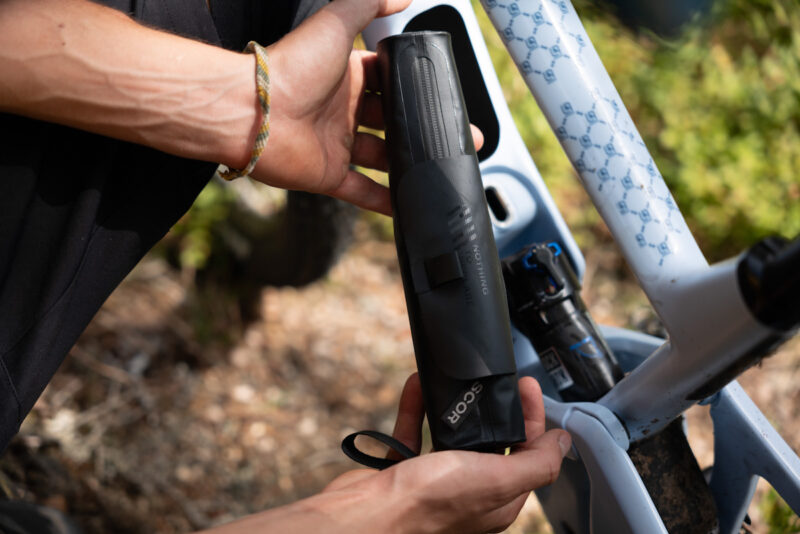
While some of their earlier bikes had a small storage compartment under the frame’s down tube guard, SCOR has evolved their storage system into the new Stash Hatch. The Stash Hatch offers in-frame down tube storage, and an included waterproof stash pouch ensures your tools and essential items stay dry inside. Each bike also comes with a spare derailleur hanger in the waterproof pouch.
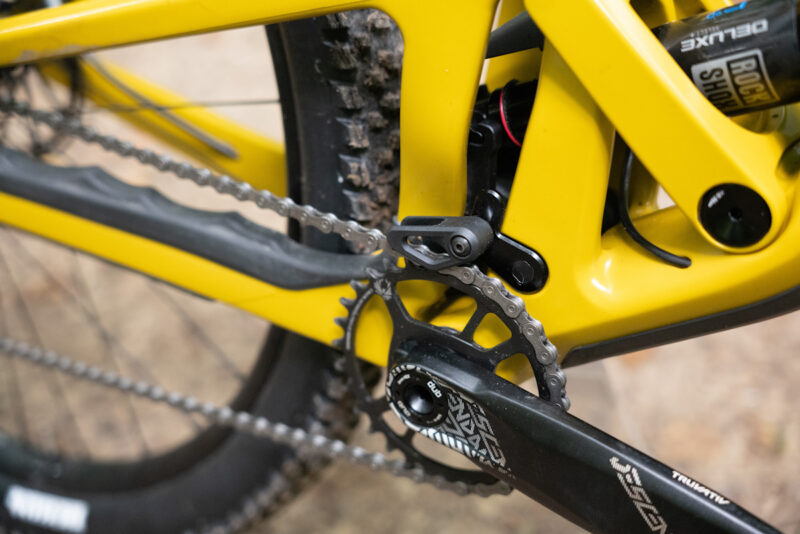
The 2030s come with SCOR’s proprietary upper chain guide, and the frames use SRAM’s UDH derailleur hangers. The rear axle spacing is Boost 148mm.
Bottle & Accessory Mounts
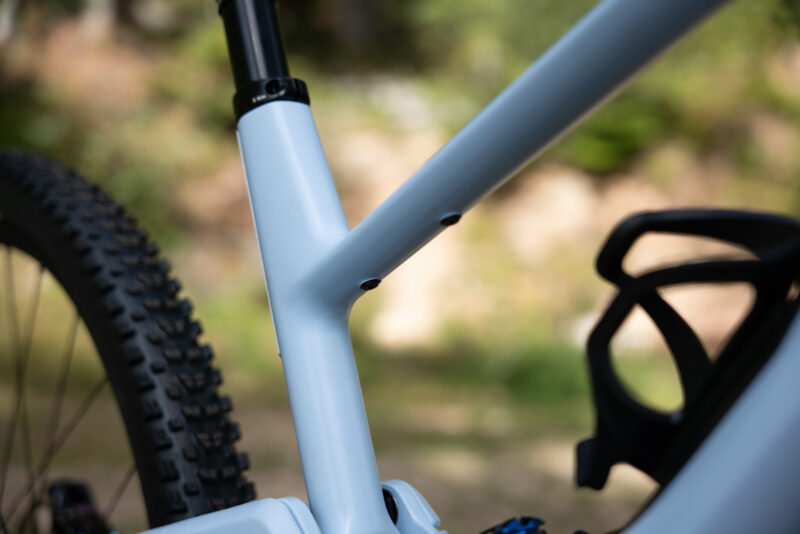
All frame sizes will fit a 500ml water bottle on the down tube, but side entry cages may be ideal for smaller frames or larger bottles due to the 2030’s low-slung top tubes. Bottle cages are not included with the bike, but the Stash Hatch cover has a standard mount. SCOR has included an accessory/water bottle mount on the bottom of the top tube to carry additional tools or cargo.
To protect the frame SCOR includes their unique chainstay protector, which is shaped to resemble a jump line! The rear shock also enjoys some mud protection from a bolt-on mudguard and the frame’s solid rocker link. The frames also feature fully guided internal routing to prevent cable rattles.
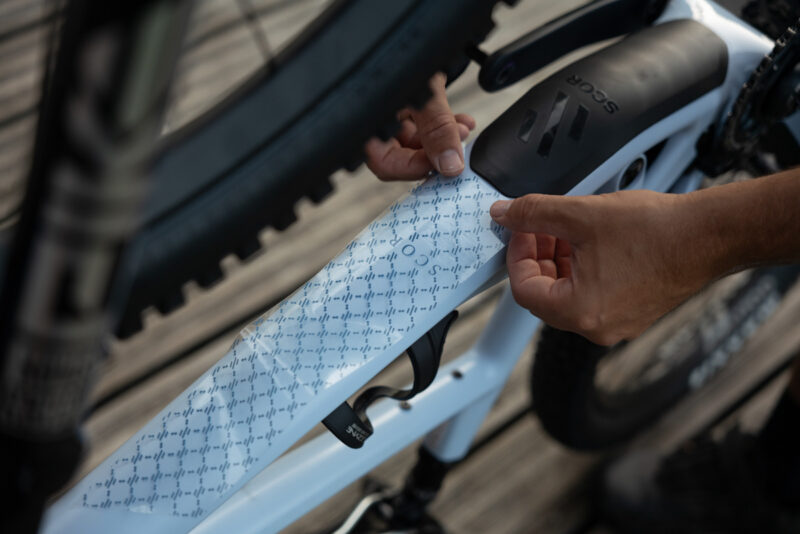
Like all of SCOR’s bikes, you can customize the look of your 2030 through their ‘Make It Yours’ program. Instead of offering custom paint jobs, SCOR prefers a more subtle aesthetic. They keep their frames looking clean and simple, but buyers can add some personal flair by choosing from a selection of graphics for the frame’s protective stickers, or even submitting their own unique designs.
Geometry:
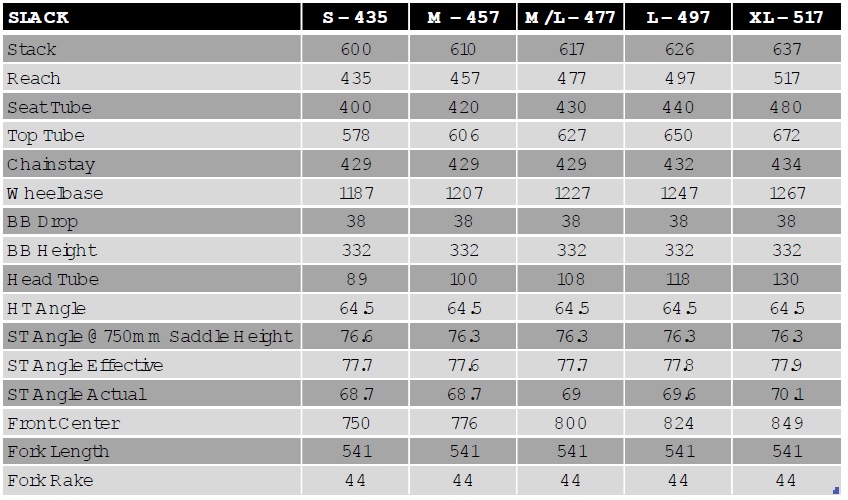
The most notable feature of the 2030’s geometry is the head angle of 64.5°, which is very slack for a short-travel bike! For longer, less rowdy rides the head angle can be slightly steepened to 65.5° with the included angle adjust headset. Adjusting the head angle also alters the reach, seat tube angle, stack height, wheelbase, and BB height. Chainstay length is unaffected.
As many brands are doing these days, SCOR kept the standover heights low on the 2030 so riders can choose their size based primarily on reach preference instead of top tube clearance. They also went with low stack heights since it’s easy to raise your handlebars with spacers, but impossible to lower them beyond what the frame allows.
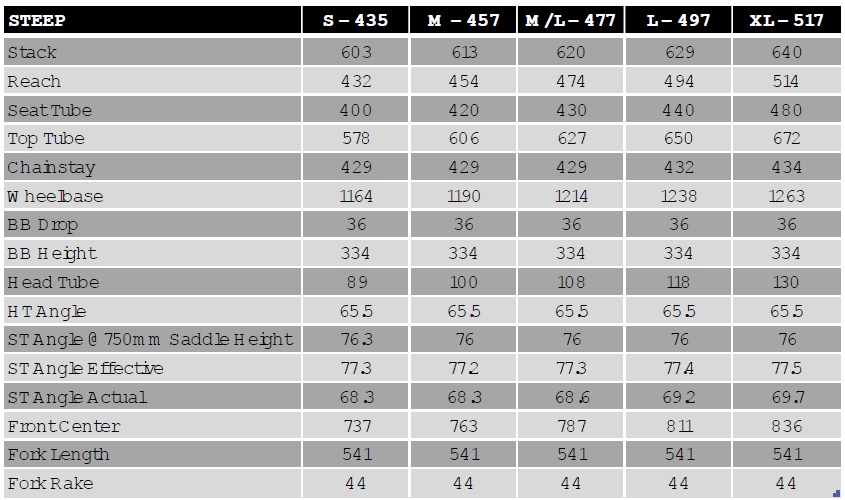
SCOR also designed the 2030s with corrected seat mast angles depending on frame size; the actual angles change with different sizes, but the effective angle at SCOR’s estimated seat heights remains the same across the board (except size small frames, which are slightly steeper than the rest).
To ensure every rider has the right weight balance and ride qualities, the 2030 offers size-specific chainstay lengths, but as the charts show they’re not different for every frame size; SCOR uses the same 429mm rear end for the small, medium and M/L bikes, but the large and XL frames do get their own chainstay lengths (432mm and 434mm).
Model Lineup:
You might notice there are no wireless drivetrains on any of the 2030 builds. SCOR says instead of jumping to include these high-end drivetrains, they prefer to spec their bikes with the best suspension components within each price range. The frames are UDH compatible so riders can easily upgrade if desired.
Some of the 2030’s components show the bike’s rowdy intentions, like wide 800mm bars, short 35mm stems, and powerful 4-piston brakes. Stock dropper post travel depends on the build; GX and X01 bikes get 125mm posts for small frames, 160mm for medium, and 185mm for M/L, Large, and XL. The NX build gets 125mm for small, 150mm for medium, and 170mm for M/L, Large and XL. Below is all the info provided; for complete build specs you’ll have to visit SCOR’s website.
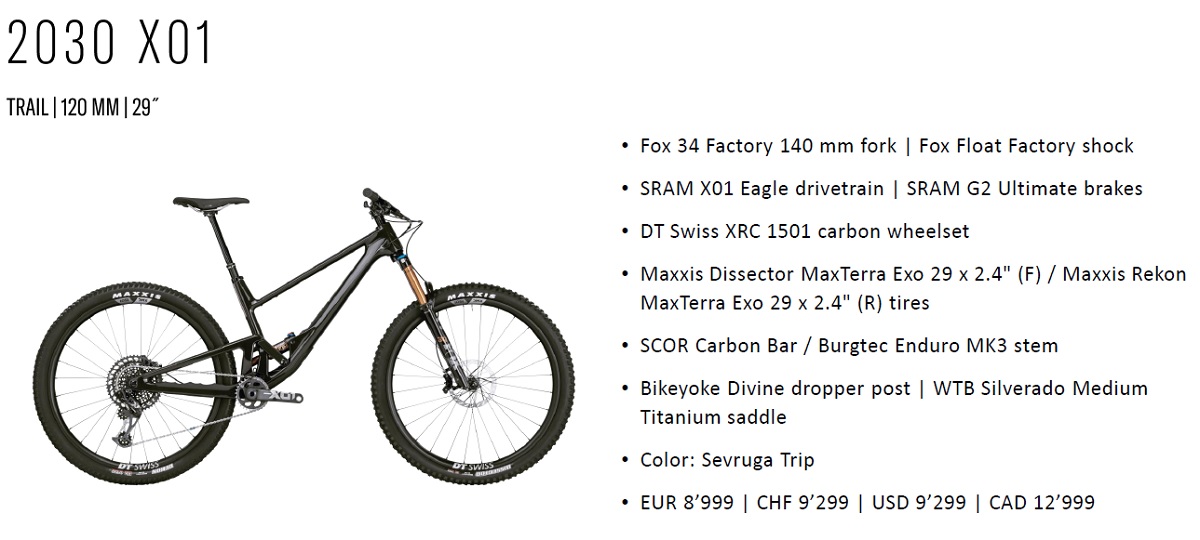
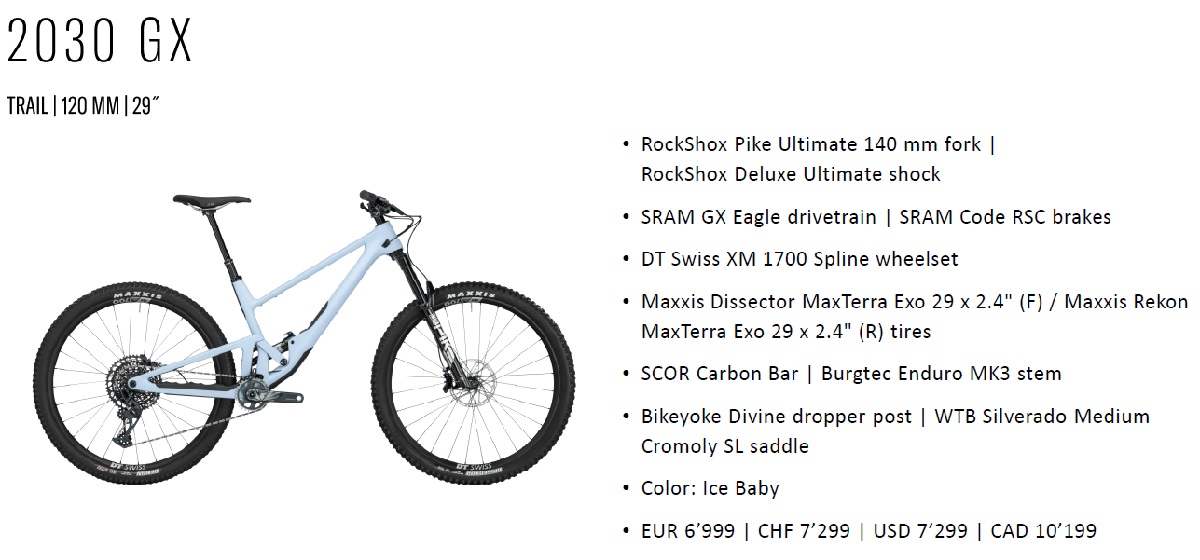
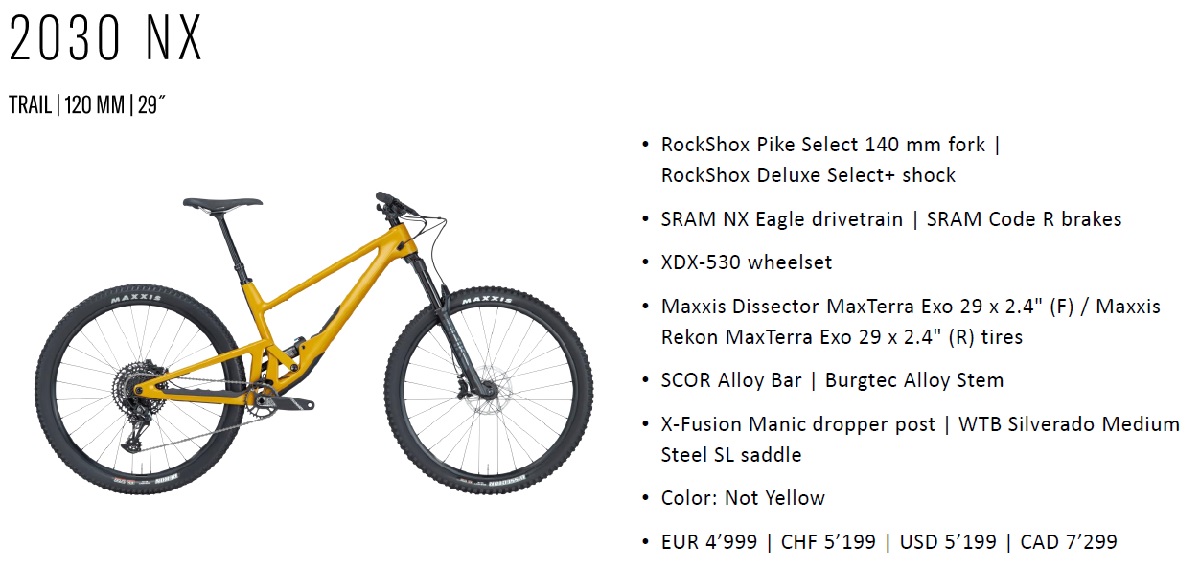
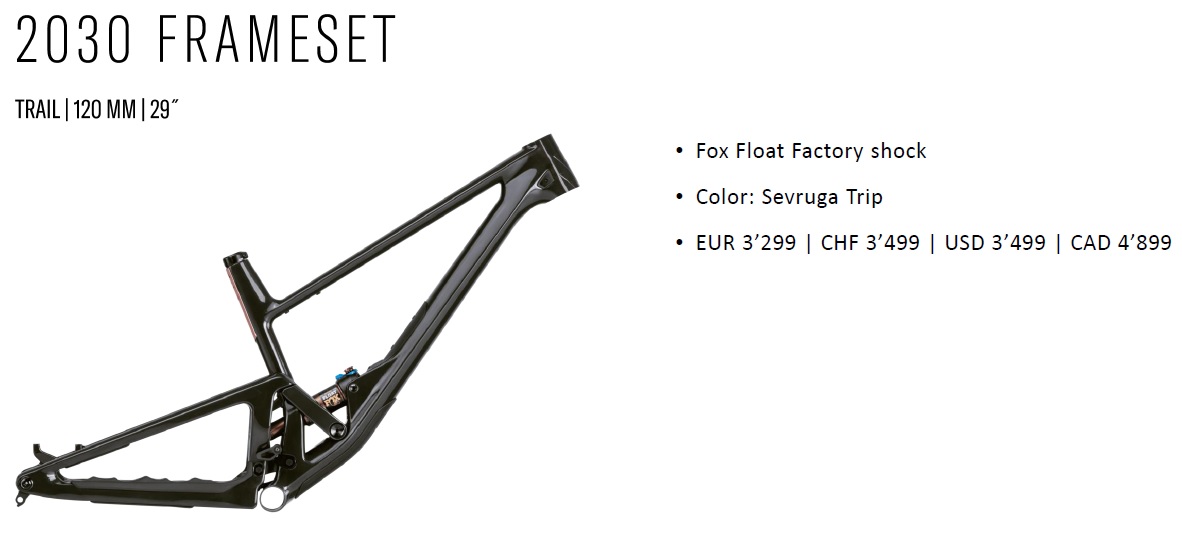
The 2030 frameset includes a Fox Float Factory rear shock, a rear axle, the seat clamp, an angle adjust headset, a derailleur hanger, and the stash pouch (with a spare hanger inside).
The new SCOR 2030 will be available as of September through SCOR dealers and online.
First Ride Impressions:
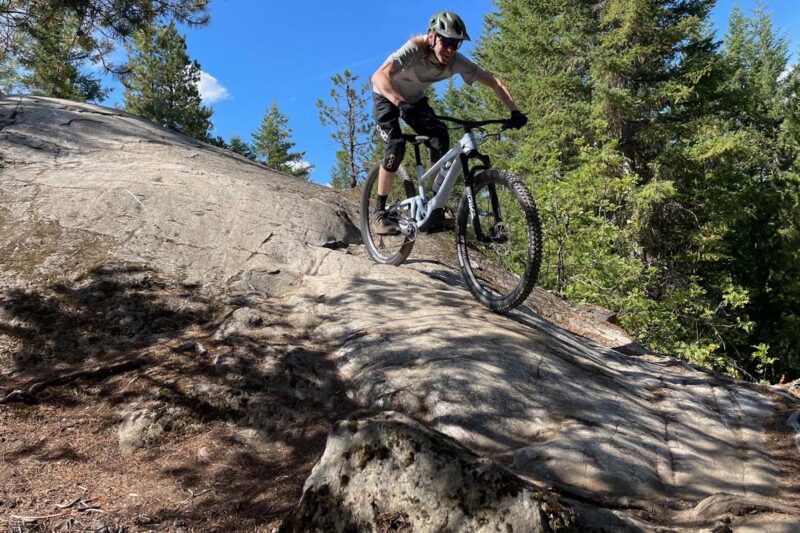
During Crankworx Whistler, I got the chance to hop on a 2030 for a test ride. As I was just recovering from a leg muscle injury, I had to keep it mellow and rode some easier trails than I normally would. Although SCOR’s engineer Mauricio assured me the bike is a ton of fun on much more technical terrain, the trails I rode were actually pretty ideal for a shorter travel bike.
Thoughts on Geometry
Right away I liked the 2030’s geometry. The front end on the M/L frame I rode is lengthy at 477mm, and the 800mm wide handlebar spread my arms out comfortably. The slack head angle of 64.5° felt great (as a guy used to longer travel trail or enduro bikes). We did ride one steeper, rockier descent that proved how stable the steering feels on rough terrain. I have never found slacker steering angles to sacrifice much on climbs, and this bike was no different. At no point did I wish the head angle was steeper.
The stubby 429mm rear end made it easy to lift the front wheel, so mid-trail wheelies and popping off jumps were a delight on the 2030. The bike doesn’t feel short overall, but the rear end felt quick in corners.
While the 2030’s rear end is short, with the slack head tube and steep seat tube angles the bike had a very stable ride. During the climbs, I felt nicely balanced between the wheels. On faster descents, I’m sure I would have enjoyed the 2030’s stability at high speeds. For steeper climbs I might have preferred a slightly longer rear end, just for the added traction… I almost slipped a wheel once or twice on our mellow loop, but conditions were dusty.
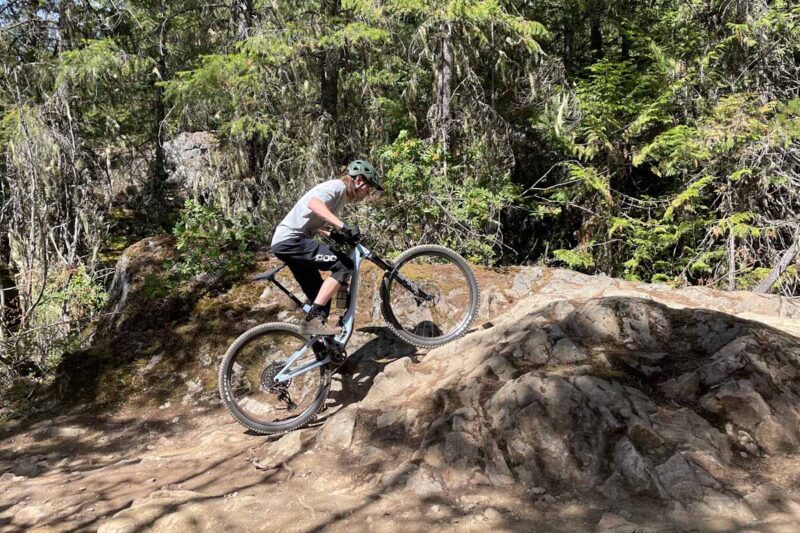
Suspension Feel
As for suspension, SCOR definitely provides a high degree of mid-stroke support and the 2030 was a dream to pop off jumps and pump through corners. Given more time with the bike, I might have dropped the rear shock’s pressure by a few psi but I wasn’t far off from being nicely dialed in. I didn’t bottom out on my mellow test ride; I probably only hit about 80% travel (bearing in mind the bike has a progressive curve).
Climbing with the shock wide open (which I did for the whole ride) I sagged about 70% into the travel, but this seemed to be because of bumps rather than pedaling inputs. The bike pedaled very well and felt noticeably fast on the climbs compared to longer travel bikes. I noticed a bit of bob from the rear end during standing climbs, but less than most bikes I’ve ridden. The 2030’s progressive curve keeps you from bobbing too deeply under stand-up sprints and helps the bike pop out of berms like it’s spring-loaded.
Final Thoughts
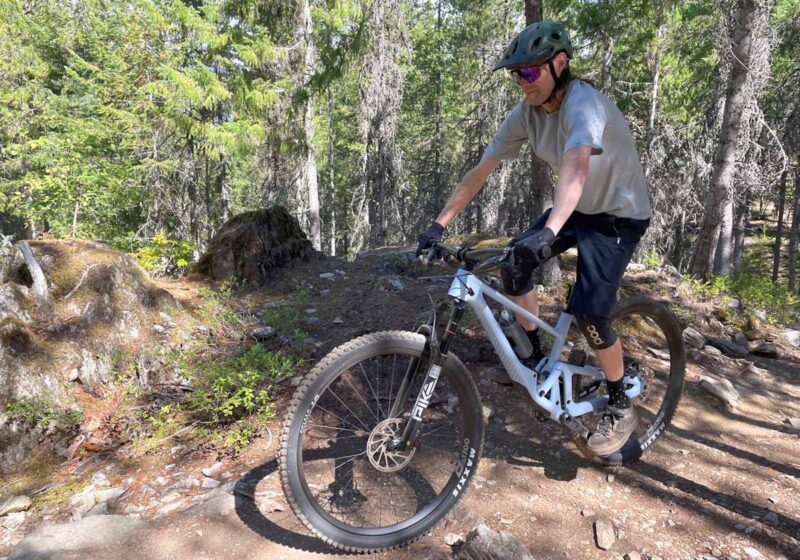
I’m not a heavy guy, but I thought the 2030’s frame felt pretty stiff, especially for its lean appearance. SCOR keeps their top tubes low, and standover height was no problem for me. I maybe tagged one pedal on our ride, despite the fairly low BB height of 332mm.
In my opinion, 29” wheels are absolutely the way to go on the 2030. The rear ends are already short and the steering is already slack, so why not enjoy the speed and rollover of the 29″ wheels. All in all, I think SCOR made this bike exactly what they wanted it to be. It’s a short travel bike that pedals very well, but it’s a great choice for long travel riders who might want to try smaller bikes. Or, short travel riders who aren’t in it to win races but want a versatile bike that’s capable on rough terrain and a blast to ride.

